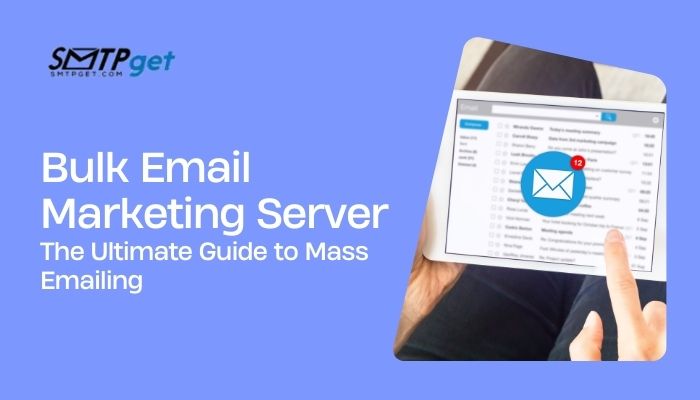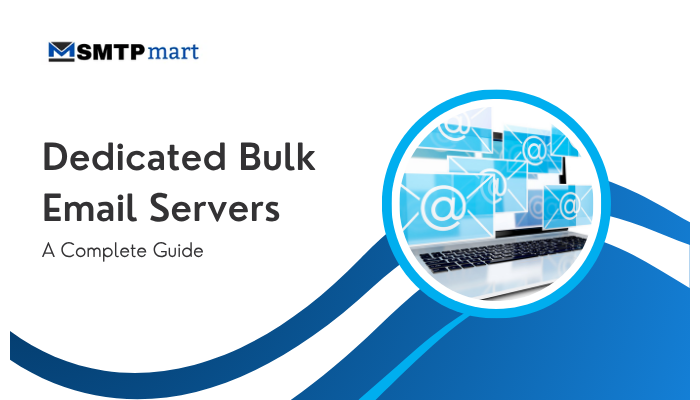Bulk Email Marketing Server- The Ultimate Guide to Mass Emailing

Strong 8k brings an ultra-HD IPTV experience to your living room and your pocket.
Email marketing remains one of the most cost-effective and conversion-driven channels for businesses to reach their target audience. But when it comes to sending large volumes of emails, whether it’s promotional content, newsletters, or transactional updates, standard email services often fall short. That’s where a bulk email marketing server comes into play.
In this in-depth blog, we’ll explore what a bulk email marketing server is, how it works, the benefits it offers, and how to set one up effectively for your marketing success.
What is a Bulk Email Marketing Server?
A bulk email marketing server is a specialized or dedicated server optimized for sending large volumes of emails to a large list of recipients simultaneously. It is widely used by businesses, marketers, and organizations who need to conduct email campaigns at scale without hitting sending limits imposed by standard providers like Gmail or Outlook.
Unlike general email services, a bulk email server is configured with the proper infrastructure, such as SMTP, DKIM, SPF, DMARC, IP warming strategies, and email queue management, to ensure high email deliverability.
Why You Need a Bulk Email Server
1. Higher Sending Limits
Bulk email servers are designed for high-volume sending, often capable of sending tens of thousands to millions of emails per day. Standard ESPs (Email Service Providers) like Gmail or Yahoo impose daily limits, which are not suitable for professional campaigns.
2. Improved Deliverability
A properly configured bulk email server enhances email deliverability, ensuring your emails land in the recipient’s inbox rather than the spam folder. This includes DNS record configurations (SPF, DKIM, DMARC), dedicated IPs, and reputation monitoring.
3. Cost Efficiency
Sending emails through your own server can significantly reduce costs over time, especially for businesses with large lists and frequent campaigns. You avoid per-email pricing models of platforms like Mailchimp or ActiveCampaign.
4. Full Control Over Sending Infrastructure
With your own server, you have full control over email sending behavior, from throttling and retries to bounce handling and spam feedback loops. This is crucial for optimizing delivery rates and maintaining sender reputation.
Core Components of a Bulk Email Marketing Server
Setting up a bulk email server involves several technical components, each playing a crucial role in its operation:
1. SMTP Server
Simple Mail Transfer Protocol (SMTP) is the backbone of email sending. An SMTP server handles the actual sending of emails and manages delivery, retries, and bounce handling.
2. IP Address (Dedicated vs Shared)
Dedicated IPs are exclusively used by you, giving you full control over reputation.
Shared IPs are used by multiple senders, which could hurt deliverability if others misuse them.
3. Domain Configuration
You must configure DNS records such as:
SPF (Sender Policy Framework) – verifies that your server is authorized to send emails on behalf of your domain.
DKIM (DomainKeys Identified Mail) – adds a digital signature to emails, proving authenticity.
DMARC (Domain-based Message Authentication, Reporting & Conformance) – protects against spoofing and phishing.
4. MTA (Mail Transfer Agent)
Mail Transfer Agents like Postfix, Exim, or PowerMTA are used to relay emails. These can be customized to handle throttling, retries, bounce management, and logging.
5. Email Queue Manager
To avoid blacklisting or overwhelming recipient servers, a queue management system helps regulate the rate of email dispatches.
Steps to Set Up a Bulk Email Marketing Server
Here’s a high-level overview of setting up your own bulk email server:
Step 1: Choose a Hosting Provider
You’ll need a VPS or dedicated server. Popular choices include:
- DigitalOcean
- Vultr
- AWS
- Contabo
- Hetzner
Choose a server with good CPU, RAM, and bandwidth allocation, especially if you're sending in high volume.
Step 2: Install SMTP Server
Install and configure an SMTP server such as:
- Postfix
- Exim
- PowerMTA (for enterprise use)
This server will manage the sending of your bulk emails.
Step 3: Configure DNS Records
Set up SPF, DKIM, and DMARC for your domain through your domain registrar or DNS hosting panel. This helps authenticate your emails and protect your domain reputation.
Step 4: Install Email Marketing Software
Use front-end software for campaign management:
- MailWizz
- Interspire
- Mumara
- Acelle Mail
These tools provide GUI dashboards to manage lists, design campaigns, monitor reports, and schedule emails.
Step 5: Warm-Up Your IP Address
Don’t start sending 100,000 emails on day one. Start small and gradually increase volume over 2–4 weeks. This builds your IP reputation and improves inbox placement.
Step 6: Monitor Deliverability
Use tools like:
- Mail-Tester
- GlockApps
- MXToolbox
They’ll help you test email quality, spam score, and DNS configurations.
Best Practices for Bulk Email Marketing
To make your campaigns more effective, follow these industry best practices:
1. Segment Your Email Lists
Don’t send the same email to your entire list. Use segmentation to tailor content by user behavior, preferences, or demographics.
2. Use Double Opt-in
Always send a confirmation email to new subscribers. This not only improves engagement but also ensures list quality.
3. Clean Your List Regularly
Remove inactive or bounced emails. Dirty lists lead to higher bounce rates and spam complaints.
4. Personalize Your Emails
Use first names, recent activity, or location-based offers to make your content more engaging.
5. Optimize for Mobile
More than half of emails are read on mobile devices. Use responsive designs to improve readability and click-through rates.
6. A/B Testing
Test different subject lines, content formats, and sending times to understand what resonates best with your audience.
Bulk Email Server vs Email Marketing Platforms
When to Use an Email Marketing Platform
- You’re new to email marketing
- You send low to medium volume emails
- You need an easy drag-and-drop builder
- You don’t want to handle technical configurations
When to Use a Bulk Email Server
- You’re sending over 100,000 emails per month
- You want full control over delivery and compliance
- You’re looking to reduce long-term costs
- You have technical expertise or access to a consultant
Challenges with Bulk Email Servers (and How to Overcome Them)
1. Blacklisting
Improper configurations or spammy content can land your IP on blacklists. Use monitoring tools and follow best practices to avoid this.
2. Deliverability Issues
Even with proper setup, inbox placement is an ongoing challenge. Regular testing and engagement tracking help fine-tune performance.
3. Technical Complexity
Initial setup is not plug-and-play. Hiring a consultant or using managed services (like SMTPget, Mail Baby, and TurboSMTP) can help.
Tools and Services to Enhance Your Bulk Email Server
MailWizz / Interspire – Front-end campaign manager
PowerMTA / Postal / MailerQ – MTA
SMTPget / iDealSMTP / TurboSMTP – Managed SMTP services
MXToolbox / GlockApps / SendForensics – Deliverability testing
Amazon SES / Mailgun / SendGrid – SMTP relay options
Conclusion
A bulk email marketing server is a powerful asset for any business aiming to scale its outreach efforts. While the initial setup may require technical expertise, the benefits, cost savings, improved deliverability, and complete control make it an attractive choice for marketers serious about email.
Whether you're running newsletters, B2B outreach, or ecommerce promotions, a bulk email server gives you the tools and flexibility to execute effective campaigns at scale.
If you're not ready to manage the infrastructure yourself, consider partnering with an email deliverability consultant or using managed SMTP services to get started on the right foot.
Note: IndiBlogHub features both user-submitted and editorial content. We do not verify third-party contributions. Read our Disclaimer and Privacy Policyfor details.







